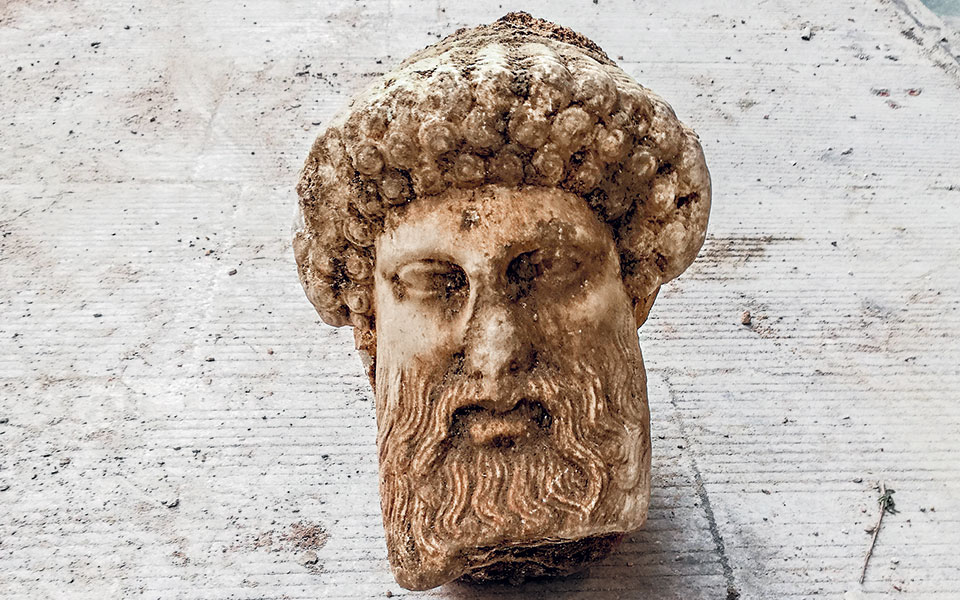A mystery surrounds the recent finding of a carved head of the Greek god Hermes, thought to once have been part of a herma (a sculpture comprising of a head or bust atop a tall rectangular base), found during works by the Municipality of Athens on Aiolou Street.
The head was found “built” into the wall of a modern sewage pipe, thus turning a once proud road marker of the ancient Athenians into a marker of their descendants’ wastewater.
One could argue that this is the second “sacrilege” committed at the expense of such hermae throughout the centuries. The first sacrilege dates to 415 BC, when the Peloponnesian War was entering its 2nd phase and the Athenians were preparing for the, ultimately unsuccessful, Sicilian Expedition.
Ancient Greeks used these hermae as road markers at large crossings and outside important public and private spaces in Athens. The sculptures, as renowned Greek archaeologist and academic Michalis Tiverios writes in an article, consisted of a human head, usually of a bearded Hermes, atop a square pillar with two rectangular protrusions on each side instead of arms. The only other body part the Athenians depicted realistically was the phallus.
Much to their surprise, shortly before the fleet departed for the Sicilian Expedition, the Athenians found their messenger gods mutilated. As Tiverios notes, the culprits known as the “Ermokopides” (Hermes mutilators) probably focused on severing the phallus off each sculpture.
Naturally, the event brought great distress to Athenians who were getting ready for war, as it was considered a supreme act of sacrilege that the gods surely would not let go unpunished. Thucydides writes that the city had put a bounty on the heads of the perpetrators and everyone – citizens, foreigners and servants alike – was encouraged to denounce the culprits.
While some sought the causes for the blasphemous mutilation, others were concerned by attempts to overthrow Athenian democracy. Could this mutilation have been an ancient act of provocation?
Suspicions quickly turned towards Alcibiades and his allies; the Athenian politician and commander of the Sicilian Expedition was accused of being behind this destructive act. Strangely, Alcibiades, who wanted to remain in Athens to defend himself, left with the fleet. His political enemies saw this as an opportunity to undermine him while he was far away.
What followed is a well-known story for those familiar with Alcibiades. When the Athenian fleet landed in Sicily, Alcibiades was called back to Athens to answer for the mutilation of the statues. He defected to Sparta, and played a role in a string of Athenian defeats (although this would not be the last time he would create enemies and defect).
As declared by the Greek Ministry of Culture and Sports, the head, which has been transferred to the Athens Ephorate of Antiquities, is thought to be an original work, probably made between the 4th and 3rd century BC.
This article was first published in Greek on kathimerini.gr












